#african black soap Details
Explore tagged Tumblr posts
Text
African Black Soap: Nature’s Gift for Healthy Skin
Introduction
In the heart of West Africa, a traditional beauty secret has been cherished for generations: African Black Soap. This remarkable skincare product, often referred to as “Ose Dudu” or “Alata Samina,” holds a rich history and an array of benefits that have gained it recognition on the global stage. As an embodiment of the region’s ancient wisdom and natural resources, African Black Soap has captured the attention of beauty enthusiasts seeking gentle, effective, and eco-friendly skincare solutions.
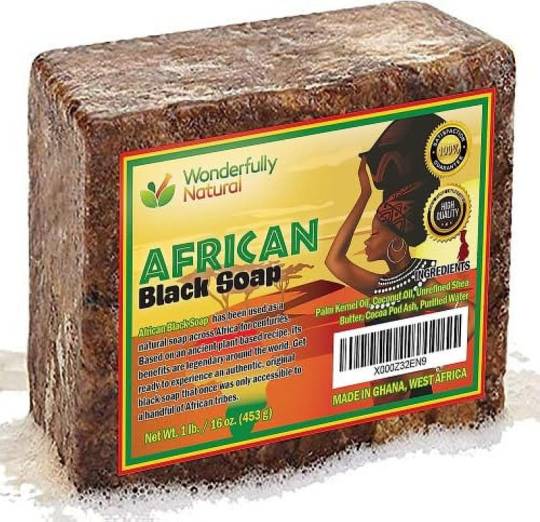
Go to our product page Click Here>>
A Glimpse into the Origins
African Black Soap has deep roots in the African continent, originating from various cultures across West Africa, including Ghana, Nigeria, and Mali. The exact recipe and method of production can vary from one community to another, but the core ingredients typically include locally harvested plant materials. These may consist of cocoa pods, plantain skins, palm kernel oil, and shea butter.

Go to our product page Click Here>>
The soap-making process begins with the sun-drying and roasting of the plant materials, followed by a careful blending and boiling process to extract the natural oils and create a dark, rich, and distinctive soap. The resulting soap is packed with nutrients and compounds that offer a plethora of benefits for the skin.
Benefits of African Black Soap
Natural Cleansing: African Black Soap is renowned for its gentle yet effective cleansing properties. It’s well-suited for all skin types, including sensitive and acne-prone skin. The soap’s natural ingredients help to remove dirt, excess oil, and impurities without stripping the skin of its natural moisture.
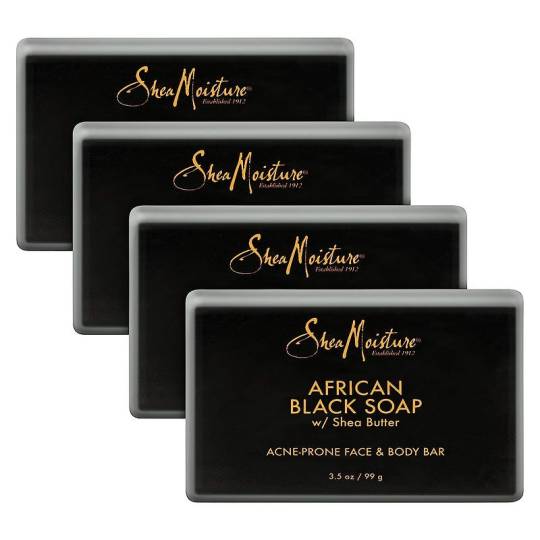
Go to our product page Click Here>>
Soothing and Calming: Many users have reported that African Black Soap can help soothe skin irritations, redness, and minor blemishes. Its anti-inflammatory properties make it an appealing option for those dealing with conditions like acne and eczema.
Rich in Antioxidants: The plant-derived ingredients in African Black Soap are rich in antioxidants, which can help combat the effects of free radicals on the skin. These antioxidants contribute to a healthier and more youthful-looking complexion.
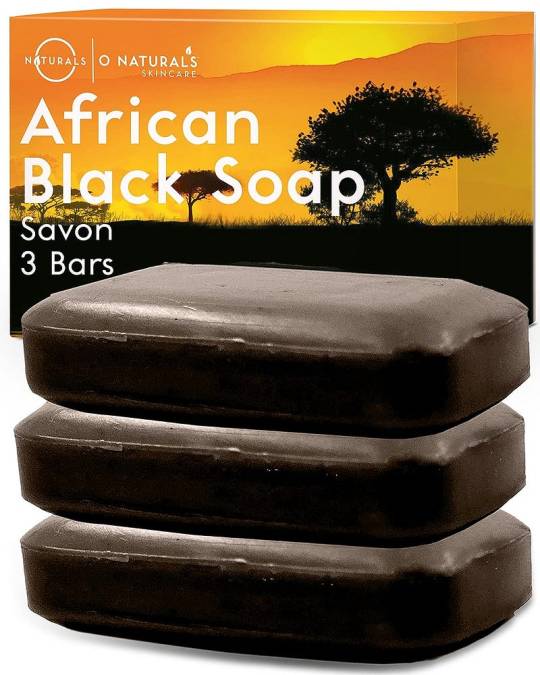
Go to our product page Click Here>>
Eco-Friendly: One of the most compelling aspects of African Black Soap is its environmentally friendly nature. The production process predominantly relies on natural ingredients and traditional methods, making it a sustainable choice in comparison to mass-produced commercial soaps that often contain synthetic additives.
Incorporating African Black Soap into Your Routine
When using African Black Soap, it’s important to note that its texture can vary based on the specific recipe and production process. Some versions can be a bit rough, so it’s recommended to lather the soap in your hands before applying it to your face or body to avoid excessive friction.

Go to our product page Click Here>>
For facial use, start by moistening your face with warm water. Gently rub a small amount of the soap between your hands to create a lather, then apply the lather to your face in circular motions. Rinse thoroughly and follow up with a moisturizer.
For body use, you can use soap in the shower just like any other soap. Lather it in your hands or on a washcloth and then apply it to your body, massaging in circular motions. Rinse off with water and pat your skin dry.
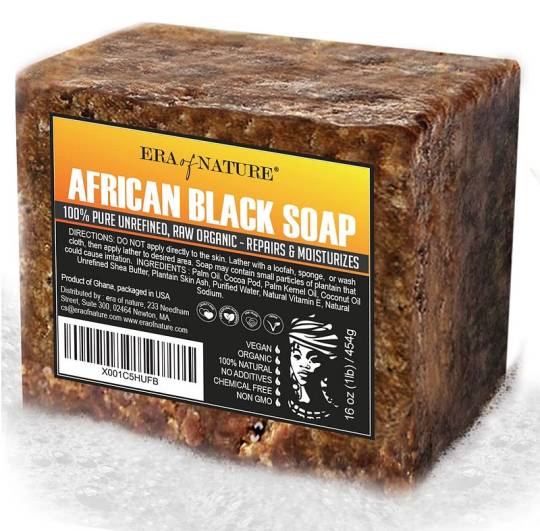
Go to our product page Click Here>>
Embracing Tradition and Natural Beauty
African Black Soap stands as a testament to the ancestral knowledge and resourcefulness of West African communities. Its versatility, gentle care, and eco-friendly attributes have made it a beloved skincare option around the world. By embracing this ancient tradition, we not only pamper our skin but also honor the cultural heritage and sustainable practices of the African continent. So, the next time you reach for a bar of African Black Soap, remember that you’re holding a piece of history that continues to enrich the world of skincare.
Read Full Review Click Here>>
#african black soap#african black soap reviews#african black soap review#african black soap Brand#african black soap Good or Bad#african black soap Amazon#african black soap Features#african black soap Price#african black soap Details#african black soap Walkthrough#african black soap Works#How to get african black soap#How to buy african black soap#african black soap benefits#shea moisture african black soap#raw african black soap#alaffia african black soap#african black soap before and after#african black soap for acne#black soap african#black african soap#black soap#african soap#black soap for face#black soap on face#african black facial soap#african black soap face#african black soap for face#african black soap acne#best african black soap
1 note
·
View note
Text
❥ — maramaxxing:
.𖥔 ݁ ˖ becoming prissier and sexier 🥂👛🐈⬛˖ ࣪
❤︎ ྀི˖𓍢 my personal pinkprint to aligning with my princess agenda—style, mindset, and routines to embody my future self. as I pivot in life, this will be one of my final blog posts like this. i’m transitioning it off blogging and will now document everything in my video diary… 𐙚
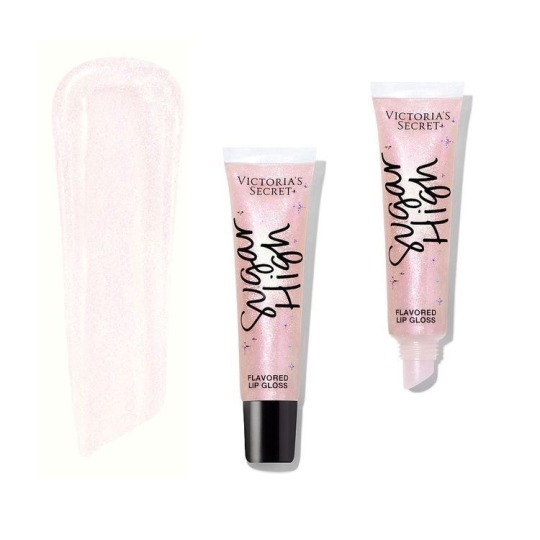



🎀 self prioritization, boundaries, and independence - i come before anyone else. i have no children and my only commitment is to make myself happy.
🍨 shadow work - to reveal what has made me how i am (strengths, traumas, interests, fears), i’ve done so much reflecting on my triggers and responses to specific stimuli. it feels good to know that i’m getting to know myself. that says growth to me.
🎀 studying my birth chart - finding out hope my placements, and which houses they’re in has really made my day to day interactions and experiences very insightful and fun to dissect.


🎀 so fab so glam lately - my vibe lately has been just g-l-a-m, glamorous. just oozing sex appeal and hyper femininity with a sophisticated twist. i can’t wait to document this on youtube.
🍨 bougie and sexy - black and satin have been a common theme for me. my aesthetic is naturally going in a very sultry direction along with animal prints, lace and diamanté detailing.
🎀 body mods - back dermal piercings, more ear piercings and super pretty tattoos, nothing too much just small and pretty embellishmentz!
🍨 fab color palette - brown, cream, soft pink, metallic accents (champagne gold, white gold), and leopard print. my everything.
🎀 gold n pink jewelry - this combo is so pretty on everything else so why wouldn’t be just as pretty on my personal adornments? ordered three gold and pink belly rings and i can’t want to mix the metals once my piercings heal.
🍨keeping a physical lookbook in my fashion diary - this year i’m not holding back. the looks are coming. the photos are coming. i want to document my fav looks, accessories, and details in real time. almost like personal portfolio.
🎀 sexy and grownifying my closet - investing in a luxurious, cohesive closet that says grown. gonna be using high heels and casual glamour to achieve this. the fabrics and cuts are extremely crucial too.
🍨 staple designer bags - if you know me you know i love designer purses. especially if they’re neutral colored and essential. i definitely plan on expanding my repertoire of bags.
🎀 customizing my wardrobe - i’m getting a sewing machine and i’m learning how to hotfix rhinestones to personalize and bedazzle anything i want to. i’m so so excited!
🍨 making my own jewelry - i’m so excited to talk about this! i’m making a kit of chains and threads along with beads and charms all in my color palette and i’m going to start popping out with so much custom made shit! body chains, waist beads, charm bracelets, just so exclusive + #prissy.
🎀 new makeup styles - been loving smoky eyes and black waterlines, overlining with a muted brown, lash clusters, rhinestones, and more sultry details.
🍨 interior lingerie - the goal is to have a boudoir that is just a sexy and alluring as my lingerie closet! sweet n sexy kitten! ❤︎︎


🎀 currently healing my gut - psyllium husk supplements, fiber, kombucha/prebiotic soda, chia seeds and an adequate amount of water have all become a part of my routine over the last month or so and i definitely feel different.
🍨 #prettiedup - bleach my hair, signature makeup routines, regular nail appointments (found a tech that i can rely on 🎀), korean skincare + african black soap, and anything else to boost my beauty.
🎀 got a personal trainer to maintain my “skinny bbl” look - i’m a tall girl with long legs and that with a tiny waist and round butt is so my look. currently training for it and i’m pretty happy so far. at this rate, by the end of march i’ll be at my goals.
🍨 building my vitamin and supplement routine - collagen, probiotics + prebiotics, maca, berberine, + some hum essentials.
🎀 my love of teas - cannot live without tea. it’s my favorite form of caffeine. and herbal teas always help me feel as if i’ve boosted my health. my favorite teas right now are green tea, matcha, and double spice chai. also love black, spearmint, and raspberry teas.
🍨 weekly digital detox - one day a week i go out of my way to avoid my phone. i simply rely on other things for entertainment, radio for music and try to interact with those around me.
🎀 hair extension wardrobe - tape ins in natural black and honey blonde, vixen sew ins with 30” bundles (i’m a tall girl so long hair to me is at least 26”)
🍨 cycle syncing - i’ve changed the way i eat depending on where i am in my menstrual cycle. i find my gut responds to the things i eat better. even with the time of day, being intentional with the way i live my life is so important to me now.
🎀 new personalized diet - high protein and low artificial sugar is pretty much what i’ve been following. what i typically eat in a day is berries, rice, oranges, lots of water, almond and peanut butter, etc. my fav sources of protein are grilled chicken, sushi, steak, salmon and eggs. of course i still like sweets they’re for sure few and far between.


🎀 trust in my intuition - it’s taken a while but i’m finally learning to trust myself. if my body is telling me to do something i do it, i don’t try to force what isn’t there, and i respect my mind by honoring the discerning abilities i was blessed with.
🍨 gratitude and thought reframing - so many things in my life changed for the better when i learned to flip my thoughts. in a glass half full fashion. it’s literally the law of assumption. i’m forever grateful for everyone and everything i have. and miss universe has only blessed me with more because i’m now so much more receptive.
🎀 no bull shit + not easily impressed - i literally have the shortest tolerance. i expect a certain standard of behavior from those that wish to be in my presence and this is because i give a certain level of care, consideration, authenticity and respect.
🍨 manifestation journal - my literal best friend. everything i write in my LOA journal comes true. i’m not exaggerating. i read it in the morning and tend to write in it before bed. i keep it right next to my bed along with some stickers and gel pens.


🎀 semipermanent beauty treatments - making appointments for lash lifts and brow microblading as we speak. also super interested in finding a great medspa in my area.
🍨 youtube #vloggingbabe🎀 - i finally made my long awaited comeback and i’ll actually be recording some of the things in this post on video. i love recording and editing. it feels like the best form of self expression to me right now! subscribe!
🎀 glam squad (esthetics, hair, nails) - i’m so anal about things being seamless and easy to remember. i like to go the same place for particular services and i’m determined to find a reliable hairstylist and esthetician that i can stay loyal to (i already have a bomb ass nail tech)
476 notes
·
View notes
Note
🌲 🖤 🧨
🌲 Of Earthly Things tidbit
Gaz's family used to raise domestic griffins (housecat/raven), and he misses having one in the home. He's trying very hard to convince Price to let them get one. Ghost has no idea what a griffin is, and his first encounter is with Riptide, the African penguin/black panther griffin at the rehab/education center that Farah works at. He got squawked at and is very off put by it.
�� Oh Death Who Art Thou tidbit
Price starts to piece Ghost's real identity together during his first interaction with the Reaper. He sounds very familiar and it's clear he's trying to manipulate his voice in hopes Price won't recognize him. Price is actually the one that introduced Simon Riley to Soap, and was Simon's best man at their wedding. He doesn't want to make any assumptions, so he doesn't say anything.
🧨 a surprise
Couldn't really think of what I wanted to do for this so snippet for Of Earthly Things ch. 4
“So, Simon, would you say you’re a fast learner? There is a great deal you would need to learn if you join.” Price continues his path of questioning, and Simon’s subtle head tilt returns. He glances back over at Soap, eyes skipping between the researcher himself and the baby goblin in his arms.
“I am observant, so I often pick up on things many others wouldn’t. He speaks slowly, carefully, and for a moment, Soap wonders if it comes from a place of arrogance. So full of himself, he needs to monitor his words to not sound so pompous. Yet it probably doesn't. It could come from a place the exact opposite, so unsure of himself and the way he's going to be perceived. So afraid of saying something wrong and being scorned for it. It's an interesting thing to consider, and Soap can't help but watch Simon out of the corner of his eye.
“How so?” Price asks, clearly skeptical of the man’s abilities.
“I noticed he’s highly intrigued by the guardian. And that something must be wrong with the… goblin,” he answers, hesitating as he glances at creature in Soap's arms once again. His amber eyes catch Soap’s, warm and intelligent, lingering longer than they should. Soap swallows nervously as he feels his ears warm with a creeping blush. There's something so fascinating about the man sitting next to him, and it makes him want to study every little detail and commit it all to memory. Yet he gets the strange feeling that Simon is doing the same: picking apart every little detail that makes Soap and committing it all to memory. It's a strange dance, Soap feels, one that he finds he enjoys. It's not every day someone else treats him the way he treats cryptids: with awe and a desire to know more.
7 notes
·
View notes
Text
Hi, I'm a Black Queer who practices Hoodoo/Conjure and works with the Lwa Spirits of Voodoo. And I'm here to say, that if you're non Black but curious about the craft (Hoodoo) and the religion (Voodoo), then go out there and learn! There's so many amazing Black made resources out there to go support. There's nothing wrong with learning in good faith. (Links and reading list at the end)
If you're not Black avoid practicing and Do Not profit with, but you can learn.
With Conjure there's some aspects you can add to your Personal craft, you just need to acknowledge it's Black history and give back to Black Practitioners (don't worry I'll link a few stores). In Hoodoo for Everyone by Sherry Shone, she talks about how Hoodoo is a tool use by oppressed people to help oppressed people. And of course anyone can and should buy Mojo Bags, dressed candles, services and whatever else from Black Conjure workers!!!
Voodoo is much more closed, but nothing wrong with learning the basics. Vibrant history and the Lwa are amazing. Especially with things like AHS getting things horribly wrong, I think it's important for people to learn what's actually Voodoo.
Here's what recommend.
For Voodoo, the Wikipedia articles are pretty good, especially for basics. Voodoo of Louisiana by Monique Joiner Siedlak is a VERY good start. She also has a bunch of books I've been wanting to read. You won't find a lot of details, like I said Voodoo is very much closed. There's a reason I said I work with the Lwa and not a Voodoo practioner. You typcially need to be initiated in to a group and there's often rituals, all of this mainly kept via word of mouth in closed circles. For me just some Lwa vist and give me messages and I sometimes ask for help and have a mini shrine to Maman Bridget. One important thing to keep in mind is that nothing in Voodoo is purely Good or Bad just like in nature.
For Hoodoo/Conjure, I recommend starting with Hoodoo for Everyone by Sherry Shone. The name honestly says it all.
Lucky Mojo Publishing has countless books on a variety of crafts and history with a Hoodoo/Conjure focus. Lucky Mojo as well has a vast amount of articles about not only Hoodoo and Conjure but other spiritual things. One I love is this one about the connected history of Judaism and Hoodoo.
Yeyeo Bontanica has youtube videos and articles on many aspects of multiple spiritual crafts, mainly African and African Diaspora crafts. Also a good supply store, I love her soaps.
Big Liz Conjure is amazing, I buy nearly all my supplies from her. Her waters and oils are super powerful (and I'm sure the rest but I've only used her waters and oils). She also hosts tons of paid classes with a variety of teachers. The price might *seem* like alot but it makes sure the teacher is paid properly for their time. Her Voodoo and Hoodoo classes are for African Americans only. If you don't know if you count just ask her. Her Facebook group is a great place to ask questions and she gives out sales there 1st. A great place for cartomancy decks and other tools including books.
Now go out, do your research and go support Black Spirituality!!!
6 notes
·
View notes
Text
Man down!
Characters: Simon Riley/Ghost, John MacTavish/Soap, John Price, Kyle Garrick/Gaz
Summary: The team get into a spot of trouble while hunting for a Malian arms dealer. Soap needs immediate medical attention as a result.
Word count: 1.9k
Warnings: Injury, violence, medical terms, blood, gore(sort of? It's not described in detail)
Authors note: I am trained in first aid but I am not a combat medic myself. There may be some terms that are confusing for some, so I have put an asterisk next to them(*) and I will be explain what they mean at end.
Also! For those who don't know, everyone in Special Forces is medically trained whether they were a combat medic beforehand or not. Take this information as you will. :).
P.S - I word vomited this entire thing in about four hours. Don't come for me if there are mistakes lol.

The Tomboctou region of Mali is an unforgiving place. One of eight regions in the African country, it is known for its hostile environment and the hostile terrorists that inhabit it. It's quite a beautiful place if you ignore the IEDs that lie in the roads and the fading bloodstains on the ancient architecture. If one were to listen closely, the sound of distant gunfire and explosions can be heard a few miles away.
Taskforce 141 move swiftly through a small village somewhere in the east of the region. It has been evacuated due to unrest in the area, so there are no civilians in sight: a fact that puts the minds of the battle-hardened soldiers at rest. Sort of. It's difficult to be at rest when you're in a situation like this.
The mission is black. No-one other than the 141, Laswell, and a few trusted confidants such as Alex and Nikolai know what the mission entails. Even then, the details are blurry.
The team have very little information. They know of a man named Yoro Cissoko, a Malian arms dealer who works internationally with the likes of Makarov and El Sin Nombre. They have been ordered to find and apprehend Cissoko before he crosses the Tomboctou border and into the capital region of Bamako where he leaves for Russia at midnight.
Laswell has discovered intelligence that Cissoko will make his way to the border via the village the team are currently clearing. The four men hug the walls of the buildings, making sure each of them are empty of hostiles as they go.
"Building is clear. Onto the next one." Gaz's voice turns tinny with the static of the comm in Price's ear.
"Copy," the Captain replies, shifting his rifle about in his hands. "Street clear. Move up."
The four men begin to cross the road, the Malian sun peaking above the horizon. So far, all has been quiet.
"I don't like this, L.T. It's too quiet," Soap states, voicing everyone's silent opinions.
The masked man besides him glances at him. "Just keep focused, Johnny. Cissoko will be here in 5 minutes. We need to-"
BANG
Gunfire erupts around them and Soap falls with a shout. The rest of the team scramble for cover as lead wasps fly past their ears.
"Where the fuck did they come from?" Gaz yells.
"I don't know but Soap is down!" Price replies, poking his head out of cover to return fire.
Soap lies on the dusty ground in the middle of the street. Blood seeps out of a gaping wound in his thigh and soils his uniform a disgusting red. He groans and pulls a tourniquet from one of the many pockets in his combat vest and begins to pull it above the wound in his leg. He tightens it with a wince and picks up his weapon, returning fire from where he sits in the road.
"Ya wee buggers. You should'a hit something more important!" he screams as he shoots one of Cissoko's men and watches him drop to the floor.
"Soap! Get to cover!" Ghost yells at him. Soap immediately turns onto his stomach and crawls towards his companions voice, his chest almost flat on the ground. It's agony but he pushes through and manages to reach the rusted car that Ghost crouches behind.
"You broken?" Ghost asks.
"Just got shot, L.T. What do you think?" he replies, pulling himself into a sitting position with his back to the car.
"I'll rephrase. Where are you broken?"
"Left leg. Mid thigh."
Ghost nods and reaches for his backpack. He opens one of the smaller pockets and retrieves the first aid kit that each of the men are supplied with before missions. He grabs scissors and cuts the ever-dampening material of Soap's combat trousers carefully until the wound comes into view. It isn't pretty.
"Shit."
"What's wrong?" Soap asks nervously.
"It's about an inch away from your femoral artery*. You're lucky you're not dead."
"Huh. Nice."
"This isn't a joke, Johnny. You're losing a lot of blood," Ghost scolds, peering at the wound.
"Trust me, L.T. I know," the smaller man responds.
"Apply pressure. I'll tell Price we need exfil." Soap does as he is asked and puts his hands over the wound. He winces in pain as he applies pressure. "That's gonna sting in the morning.."
"Price. Soap's in bad shape. We need exfil. Now."
"Roger. I'll call for Nik to pick us up." Price's tinny voice replies through the radio.
"Copy that."
"I'm not losing anyone today," Price states, "Keep him safe."
Ghost grunts an affirmation through the radio and turns back to Soap. The scot is quiet. He's slumped forwards and his arms lie limp at his sides.
"Shit," Ghost exclaims, rushing over to him. "Soap? Soap! It's Ghost. Wake up! Can you hear me? Wake up!" Ghost pinches the man in the arm, taps him roughly on his collarbone, squeezes his earlobes; anything that could make Soap respond.
"Fuck!" Ghost pulls Soap down from a sitting position into a lying one on the ground. He quickly puts him in the recovery position before tightly bandaging the wound in Soap's thigh.
"Price! Soap's unresponsive. Where's that exfil?"
"Hold tight. We're on our way. I'm calling off the mission."
Ghost sighs. He knows as much as anyone what Cissoko will do if he leaves the country. "Copy," he states grimly. He hates the idea of letting a man as vile as Cissoko go, but Soap is more important and he knows that.
"We've got 18 hours until he leaves. We'll have another chance." Ghost scoffs at that but otherwise says nothing. Almost immediately after, Gaz appears and fires at the opposition from behind a crumbling brick wall nearby. Price shows up soon after and crouches next to Ghost.
"We need to get him out of here. Come on!" Price and Ghost band together to pick Soap off the floor and hook his limp arms around their shoulders. With Gaz covering, the three men move out from behind the old Toyota and drag their way to an alleyway that leads to the edge of the sandy village. From there, the vast expanse of the dessert beyond can be seen between the space of the buildings. If the team were not otherwise preoccupied with the unconscious Soap, they'd be able to see the black dot in the distance that is Nik's helicopter.
"Bullets!" Gaz yells as he falls back to the group, now out of rounds.
"Fuck's sake," Price growls, handing off Soap to Gaz as he points his weapon to the entrance of the alleyway. "Get to the other side of the alleyway. Now!" Gaz and Ghost drag Soap's deadweight to the end of the alleyway as instructed, Price following shortly behind.
"Nik, please tell me you're close," Price speaks into his radio.
"Don't worry, my friend. I'm here," Nik responds, setting down his helicopter behind the cover of the village buildings.
"Nikolai! Ain't you a sight for sore eyes," Ghost responds.
"Get in. I'll get you out of here." Ghost and Gaz work together to heave Soap onto the chopper before following after. Ghost trains his rifle towards the alleyway as Gaz tends to Soap. Price, after shooting down a few of Cissoko's men, jumps into the helicopter before tapping Nik's shoulder. At that signal, Nik raises helicopter and flies away.
"How's he doing?" Price asks when the team are a safe distance away.
"Not good, Cap. He needs a hospital," Gaz responds to which Price nods. Soap's face is visibly paling by the minute.
"I have a celox bandage**. Shove that in there," Ghost states, handing Gaz a stack of bandages. The sergeant nods and begins to unwrap Ghost's previous handiwork. His lip curls in disgust when he sees the state of his friends leg.
"Fucking hell. How is he not dead?"
"Because I'm a stubborn fucker, laddy. I thought you knew that."
All three men surrounding the injured scot shoot up.
"What? Is there something on my face?" Soap slurs, a weak smile gracing his features.
"Just that shit-eating grin, Johnny. Might want to wipe it off," Ghost replies.
"Now that's permanent, L.T. You ain't gonna get that off."
Ghost sighs. "I'll tolerate it for now, mate. Just keep talking to me, okay?"
"Now that's something I can do," Soap chuckles, the sound more gravelly than what was normal. He winces suddenly as Gaz shoves the celox bandage into the wound in Soap's leg.
"Sorry mate. Need to soak up the blood," Gaz states as he presses it down before wrapping it in a regular bandage and tying it tightly.
Soap shrugs. "I know, laddy. Don't worry."
During the flight back to base, Soap continued to fall in and out of consciousness. Everytime he went unresponsive, the heavy lumps in the throats of the 141 got thicker and thicker. The distance between the village and the base was only about 40 miles, but even with Nik pushing his chopper as fast as it could go, the journey felt like years. When they got home, Soap was still unconscious. The team handed him over to the CMT's***, giving them the information they needed. He was then put on a stretcher and whisked away.
[1 hour later]
"I'm sorry, sir. He is still in critical condition. You can't visit him."
"Is he conscious?" Price asks the combat medic in front of him, crossing his arms.
"Well- yes sir-," he replies, "But he's not ready for visitors yet. We need to make sure he's stable before he can see anyone."
"I don't care. He's part of my team. It's my job to make sure he's okay." With that, he shoves past the man and enters the tent. He scans the room of injured soldiers and finds Soap in the corner, lying down on a small hospital bed with his leg elevated on several pillows.
When Soap sees the Captain, his mouth cracks open into a grin. "Miss me already, eh Price?"
"Just making sure you're okay," he replies, a small smile gracing his face. He drags a metal stool to Soap's bed and sits down on it.
"Docs said I'll be benched for a while. They're gonna send me back to the hospital back at Timbuktu**** to recover."
John sighs. "Understandable. We'll miss you here."
"I'm sure you'll do fine without me, boss man. Laswell will keep me company."
"Good." Price stands up again. "See you in a bit, mate. Nice knowing you're alright. Don't die on me, okay? That's a lot of paperwork."
Soap laughs. "I make no promises."
With that, Price leaves. He exits the tent to see Ghost and Gaz harassing the medic he was talking to earlier.
"I'm sorry, Sergeant, but he's already had one visitor when he's not supposed to. Please come back later. I assure you we'll keep him safe." Gaz was about to retort but Price beat him to it.
"He's fine, lads. He's heading back to Timbuktu in the morning."
Gaz nods, much to the appreciation of the combat medic in front of him. He turns with Ghost and the three of them leave the area.
"So what are we going to do about Cissoko?" Gaz asks.
"I've got a plan for that. I'll brief you later," Price replies, turning in the direction of the officers tents with Ghost.
"Got it."
--
Terms:
* Femoral Artery - an artery that runs down the inside of your leg. The main artery that delivers blood to your legs. If that gets sliced in any way you've got about a minute to live.
** Celox bandage - this thing basically works like a tampon but for the rest of your body. You shove it into a wound and it soaks up the blood and expands which then blocks the wound up. Pretty solid piece of kit.
*** CMT's - an acronym that means "Combat Medical Technician". Its a fancy term for a combat medic.
**** Timbuktu - the capital city of Tomboctou.
Masterlist
#call of duty modern warfare 2#call of duty modern warfare#call of duty#simon ghost riley#johnny soap mactavish#john price#kyle gaz garrick#cod mw2#cod#cod mwii
10 notes
·
View notes
Text
Experience Ultimate Relaxation: Moroccan Bath Hammam and Jacuzzi Bath Services in Dubai
Ever imagined soaking away your stress in an exotic Moroccan bath or a luxurious Jacuzzi in Dubai? Both the traditional Moroccan Bath Hammam in Dubai and the modern Jacuzzi Bath Service in Dubai offer unique ways to unwind and rejuvenate, each providing a sanctuary where tranquility meets luxury in the heart of the bustling city.

The Enchantment of the Moroccan Bath Hammam
Dubai, a city that seamlessly blends the traditional with the ultramodern, offers some of the most authentic Moroccan Bath Hammam experiences outside of Morocco itself. This age-old tradition, deeply rooted in North African culture, involves a steam room where your body is bathed and exfoliated using Moroccan soap and a special glove known as a 'kessa.' The process helps to detoxify the body, improve circulation, and soften the skin in a serene, meditative environment.
The Process and Benefits of a Moroccan Hammam
A typical session in a Moroccan Bath Hammam in Dubai starts with relaxation in a warm steam room to open the pores, followed by a rigorous scrubbing that sheds the outer layer of dead skin cells. After the exfoliation, a soothing soap massage ensues, using traditional Moroccan black soap, which is rich in minerals and known for its purifying properties. This experience not only cleanses the body but also reinvigorates the mind, leaving you feeling refreshed and revitalized.
Luxuriating in a Jacuzzi Bath Service
On the other end of the spa spectrum is the Jacuzzi Bath Service in Dubai, which offers a different kind of indulgence. Ideal for those seeking a private escape, a Jacuzzi bath provides therapeutic, warm massages through its jet systems, which help relax muscle tension and improve blood flow. This service is perfect for individuals looking for a solitary retreat or couples seeking a romantic spa experience.
The Health Advantages of Jacuzzi Baths
Engaging in a Jacuzzi Bath Service in Dubai is not just about luxury; it's about health. The benefits of a Jacuzzi bath include reduced stress and anxiety, alleviated pain from arthritis and other muscular diseases, and improved sleep patterns. The warm water and massage jets also promote a healing response in the body, reducing inflammation and easing sore muscles.
Choosing Between Moroccan Hammam and Jacuzzi Bath
Deciding whether to choose a Moroccan Bath Hammam in Dubai or a Jacuzzi Bath Service in Dubai depends largely on your personal preference and desired health benefits. If you are looking for a thorough cleansing and exfoliating treatment, the Moroccan Hammam is your go-to option. However, if relaxation and muscle relief are what you seek, the Jacuzzi bath will serve you best.
Dubai offers myriad ways to relax and rejuvenate, but the Moroccan Bath Hammam and Jacuzzi Bath Service stand out for their unique blend of cultural tradition and modern luxury. Whether you choose the invigorating scrub of a Hammam or the soothing bubbles of a Jacuzzi, each experience promises to replenish your spirit and pamper your body.
Check out our site for more details.
Luxury Massage Service In Dubai
Russian spa Dubai
0 notes
Text
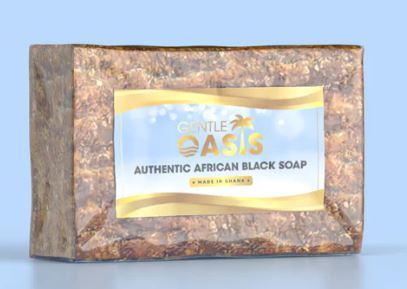
Harnessing the potent benefits of natural ingredients sourced from the heart of Africa, this soap is a symphony of nourishing goodness. Rich in shea butter, cocoa pods, palm kernel oil, and plantain skins, our formula is designed to cleanse, moisturize, and rejuvenate your skin. To know more details kindly visit our official website https://gentleoasis.com/products/authentic-african-black-soap
0 notes
Text
Bulk Black Soap Wholesale Supplier
Description
Group Oriental offers various black soap products. We deal as a wholesale supplier of original Moroccan black soap. The products are 100% organic and natural and we ensure their quality and authenticity.
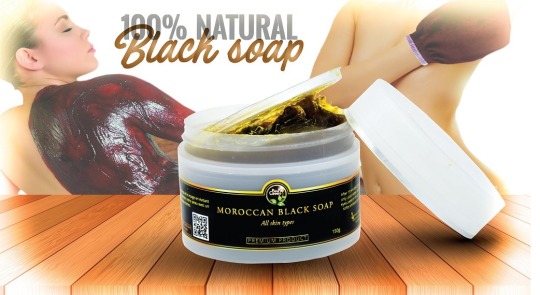
Benefits
The black soap is originally produced in Morocco where traditional methods are employed for the manufacturing of a rich and aromatic product. The soap is known to be the best natural cleanser which is suitable for all types of skin. It helps to get rid of the acne, scars and the irritation. The finest natural ingredients in the soap help to rejuvenate the skin and bring back the natural glow.

Group Oriental Serves as a Wholesale Supplier of Black Soap
1. COMPOSITION Formula’s reference: SAV.NOIR.01 INCI name (US)
CAS number
Percentage
Aqua (water)
7732-18-5
>50% - ≤75%
Potassium olivate
68154-77-8
>25% - ≤50%
Glycerin
56-81-5
>1% - ≤5%
Sodium benzoate
532-32-1
>0,1% - ≤1%
Potassium sorbate
24634-61-5 / 590-00-1
>0,1% - ≤1%
Potassium hydroxide
1310-58-3
≤0,1%
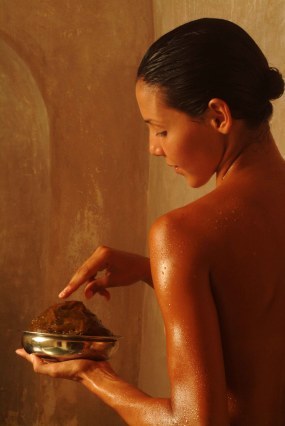
100% Organic Moroccan Beldi Black Soap - Moroccan Black Soap: The Next Big Thing in Skin Care
Moroccan black soap is one of the country’s hidden secrets. Its benefits for the skin and well-being are unparalleled as it brings to the surface the best qualities of the country and the local culture. Made with secret recipes passed down from generation to generation. There are several formulations of Moroccan black soap on the market today that may add in oats, honey, or aloe. But the core ingredients of traditionally made African black soap include native plants like plantain skins, cocoa pods, shea tree bark, or palm tree leaves. Moroccan black soap has many health benefits as it:
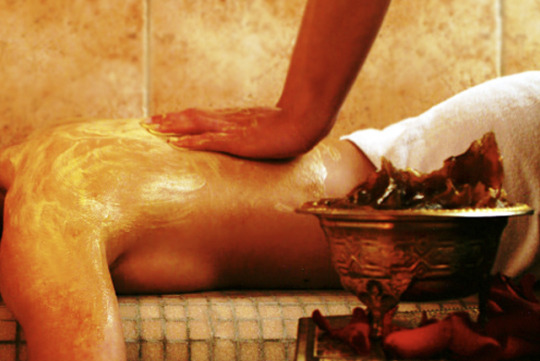
It has ageing benefits.
It helps improve skin texture
Helps to get rid of skin discolorations and skin irritation
It has a deep cleaning properties
It is a natural exfoliate

At Oriental Group, we make the finest of Moroccan black soap; it is sold in different sizes:
Packaging details: 100g, 150g, 250g, 1kg, 5kg plastic jars.
We offer to our clients a flexible offer and very reasonable prices. We also offer a private labeling service to the clients wishing to resell our products, alongside with the design fee if they wish to put their own design on the label. It is a onetime fee, as we understand the importance of the products and the branding for our clients.
Supply Ability of Black soap: 2000 Kg/Kgs of Black soap per Week
Port: FOB Casablanca /Tanger MED / Agadir
Payment Terms: L/C,T/T, ,Western Union,MoneyGram/Paypal
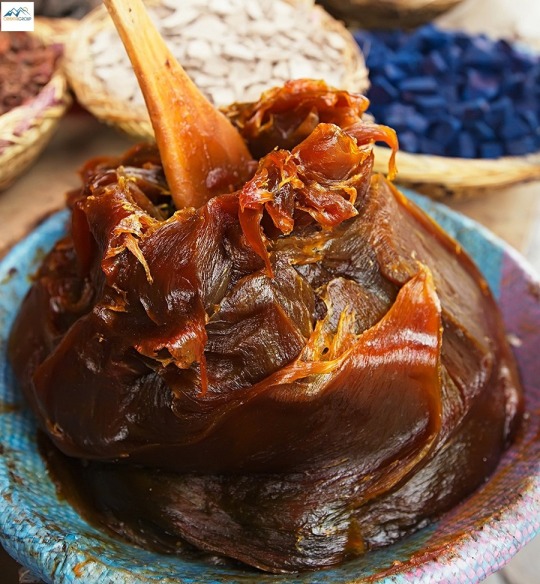
Quick Details
Place of Origin: Black soap from Morocco
customs code / HS code of Black soap: 34.01.20.90.99
Brand Name: BioProGreen or Twichya or private labeling
Form: Paste
Use: Body , face
Product name : Black soap
Feature : Antiseptic, Basic Cleaning, Whitening
Flavors : Eucalyptus - Lavender.
MOQ : 50 pc or 5kg
Delivery Time : 7-15 working days
Shipping : UPS,DHL,FEDEX,TNT,EMS,etc or as per customer request
Delivery Detail: 10 days after confirmation of all details and deposit
Precautions: Rinse thoroughly if products gets into the eye.Keep away from children
We offer the natural black soap and provide our services as its wholesale supplier. You can get the product with private and customized labelling. Worldwide export and delivery services are available with quantity-based discounts at Group Oriental.

#black soap company#black soap wholesale#bulk black soap#black soap manufacturers#black soap in bulk#black soap factory#black soap export#black soap distributors#black soap producers#bulk black soap wholesale#black soap wholesale supplier#black soap private label
0 notes
Text
youtube
EP.3 CultureNow: Top 10: This Week: Extra Important: The International Podcast
In our segment 'Puff of The Post!' we read and discuss The Huffington Posts' most popular article of the week.
In 'Plz Lyk Mihhhh' we use Google's I'm Feeling Lucky feature to search a random product or company and make an ad for it on the spot. So fun! Here is info to this week's segment! Mine is on the way!! 👇
Okay Pure Naturals, African Black Bar Soap https://www.iherb.com/pr/okay-pure-naturals-african-black-bar-soap-original-5-5-oz-156-g/90256#details
0 notes
Text
Letitia’s story might have vanished altogether if, in the late 1980s, a graduate student named Bob Zybach hadn’t stumbled on an unusual detail while researching Soap Creek’s history. One land claim, he noticed, named “estate of David Carson” as the claimant. “That struck me as odd,” Zybach told me. “How can a dead person claim land?” His question led him to the Benton County Courthouse, where a clerk dug out a file never before checked out. Inside, a stack of 180 documents detailed the Carsons’ estate sale and Letitia’s lawsuits. “It was like striking gold,” Zybach said. “Every item she’d owned was listed, all the legal records were there, and no one had touched them since 1856.” For the next three decades, Zybach and his research partner, Jan Meranda, transcribed century-old cursive, tracked down relatives, and located gravesites to piece together Letitia Carson’s story. Their findings revealed “one of the most interesting and consequential figures of 19th century Oregon,” Zachary Stocks, executive director of Oregon Black Pioneers, the state’s only historical society dedicated to the African American experience, told me. “Her story can go toe-to-toe with anyone we associate with early Oregon history.”
#pnw#pnw history#links#it's amazing that her story was rediscovered after so long#i do wish that when this article talked about the racism she faced#it engaged with the (imo very likely) possibility that she was abused by david carson#there was a lawsuit over him physically and sexually abusing an enslaved Black girl in Missouri#and i think that's an important part of this story
1 note
·
View note
Photo
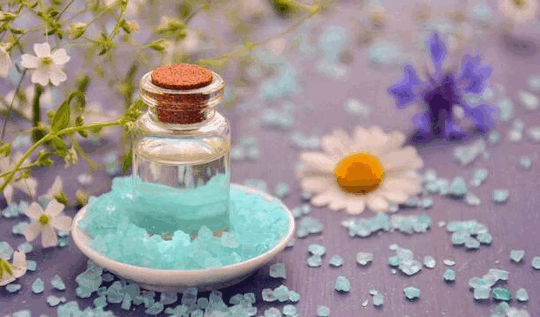
Top Best Organic Beauty and Skin Care Products in The US The face of nature has a wide range of handmade natural beauty products made from natural ingredients. Organic skin care products from Face of Nature include: Rainfall Mist, Rise and Shine moisturizer, Black African Soap, Red Clay Masque, Lavender serum, Lavender Bar Soap, Exfoliate Scrub, etc. For more details: https://faceofnature.org/collections/skincare-products
#beauty and skin care products#best natural skin care products#natural beauty products#organic skin care products
2 notes
·
View notes
Text
Shea Moisture African Black Soap: For Skincare And Beauty
Introduction
In recent years, there has been a resurgence in the popularity of natural skincare products, and one name that stands out in this movement is SheaMoisture. Among their diverse range of offerings, SheaMoisture African Black Soap has gained a reputation for being a transformative and revered skincare solution. Derived from centuries-old African recipes, African Black Soap has taken the beauty world by storm, and SheaMoisture’s version of this product has carved a niche for itself as a powerhouse in the skincare realm. In this article, we’ll delve into the history, benefits, and usage of SheaMoisture African Black Soap.
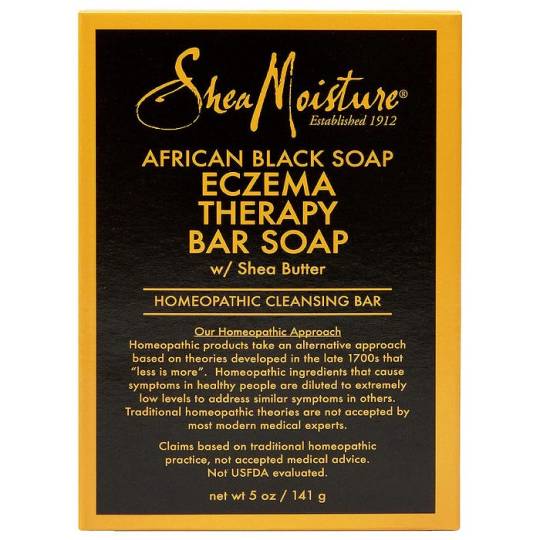
>> Buy Now Shea Moisture African Black Soap <<
A Glimpse into African Black Soap’s History
African Black Soap, often referred to as “Ose Dudu” or “Alata Samina,” has a rich history dating back centuries in West Africa. This traditional soap-making technique originated in Ghana, Nigeria, and other West African countries, where local women would gather natural ingredients like plantain peels, cocoa pods, palm kernel oil, and shea butter to create a soap that would gently cleanse and nourish the skin.
The Beneficial Ingredients
African Black Soap, often referred to as “Ose Dudu” or “Alata Samina,” has a rich history dating back centuries in West Africa. This traditional soap-making technique originated in Ghana, Nigeria, and other West African countries, where local women would gather natural ingredients like plantain peels, cocoa pods, palm kernel oil, and shea butter to create a soap that would gently cleanse and nourish the skin.
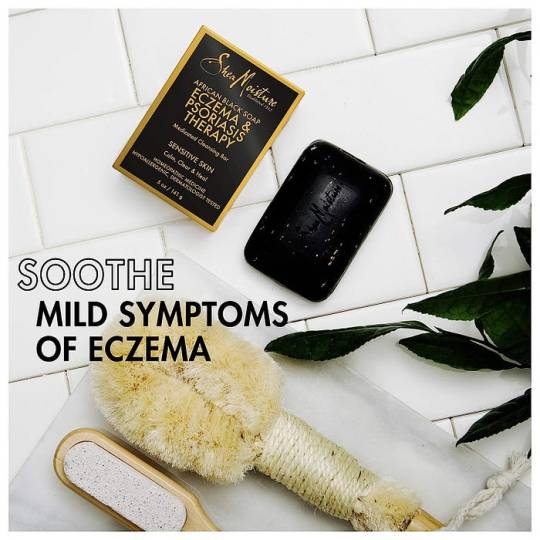
>> Buy Now Shea Moisture African Black Soap <<
Plantain Peels: Rich in vitamins A and E, plantain peels contribute to the soap’s exfoliating properties, helping to remove dead skin cells and promoting a smoother complexion.
Cocoa Pods: Packed with antioxidants, cocoa pods offer anti-inflammatory properties, which can assist in calming irritated skin and addressing skin conditions like eczema and psoriasis.
Palm Kernel Oil: Known for its moisturizing properties, palm kernel oil helps to keep the skin hydrated without clogging pores. Its natural fatty acids provide a protective barrier against moisture loss.
Shea Butter: A renowned skincare ingredient, shea butter is deeply moisturizing and helps soothe dry, sensitive, and acne-prone skin. It contains vitamins and essential fatty acids that promote overall skin health.

>> Buy Now Shea Moisture African Black Soap <<
Benefits of SheaMoisture African Black Soap
Gentle Cleansing: African Black Soap is revered for its gentle yet effective cleansing properties. It cleanses the skin without stripping away its natural oils, making it suitable for all skin types.
Acne Relief: The combination of ingredients in African Black Soap can help manage acne and breakouts. Its exfoliating properties unclog pores, while its anti-inflammatory components soothe irritated skin.
Even Skin Tone: Regular use of African Black Soap can help even out skin tone and fade the appearance of dark spots and hyperpigmentation.
Moisturizing: The presence of shea butter and palm kernel oil ensures that your skin stays moisturized and soft after cleansing, without feeling overly greasy.
Natural Ingredients: Free from harsh chemicals, parabens, sulfates, and artificial fragrances, SheaMoisture African Black Soap aligns with the growing demand for clean and natural skincare products.
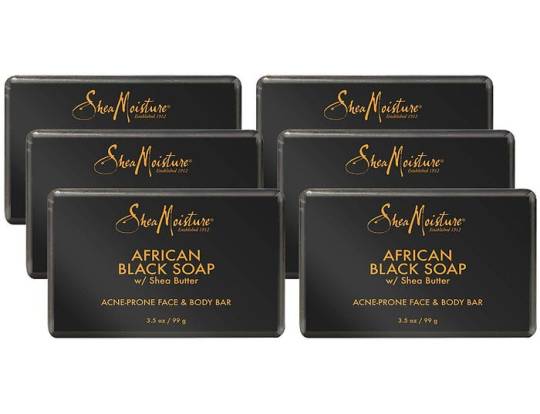
>> Buy Now Shea Moisture African Black Soap <<
Using SheaMoisture African Black Soap
Face Cleansing: Gently lather the soap between your hands and apply the foam to your damp face. Massage in circular motions, then rinse thoroughly. Follow up with a moisturizer to lock in hydration.
Body Cleansing: Use the soap bar directly on your body, or create a lather on a washcloth or loofah. Massage onto your skin, then rinse for a refreshing cleanse.
#shea moisture african black soap#shea moisture african black soap review#shea moisture african black soap reviews#shea moisture african black soap Brand#shea moisture african black soap Good or Bad#shea moisture african black soap Amazon#shea moisture african black soap Features#shea moisture african black soap Price#shea moisture african black soap Details#shea moisture african black soap Works#shea moisture african black soap Walkthrough#How to buy shea moisture african black soap#How to get shea moisture african black soap#shea moisture african black soap shampoo#shea moisture african black soap clarifying mud mask#african black soap#raw african black soap#african black soap benefits#african black soap before and after#benefits of african black soap#african black soap acne#is african black soap good for acne#african black soap raw#african black soap real#african black soap review#dr dray african black soap#african black soap dr dray#african soap#african black soap skin care#african black soap whitening
0 notes
Text
SP Influences: The Case of Charles Dexter Ward and The Haunted Palace
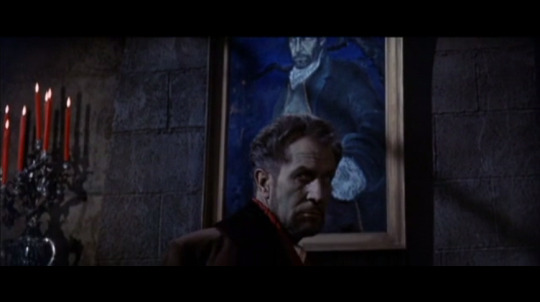
CONTENT WARNING FOR DISCUSSION OF RAPE (NOT JUST THE FANTASY METAPHOR KIND) AND SLAVERY. ALSO SPOILER WARNING FOR THE HAUNTED PALACE (1963), THE CASE OF CHARLES DEXTER WARD, AND BOTH THE FIRST AND FINAL ARC (INCLUDING THE ENDING) OF STRANGE PARADISE.
Although it never directly copied from other works, the 1969-70 soap opera Strange Paradise appears to have drawn inspiration from several classic works of Gothic fiction. Unlike its more famous cousin Dark Shadows (1966-71), which lifted most of its major plotlines from public-domain horror classics like Dracula and The Turn of the Screw with relatively few changes, the influence of other works on the plot and characters of Strange Paradise generally took a subtler form. Many of the early advertisements and articles promoting the serial compared its protagonist Jean Paul Desmond and villain Jacques Eloi des Mondes (both played by Colin Fox) to Dr. Jekyll and Mr. Hyde from the Robert Louis Stevenson novel, but--as Curt Ladnier has pointed out--there are only superficial similarities between the plot of the serial’s Maljardin arc and The Strange Case of Dr. Jekyll and Mr. Hyde, making the two works less similar than readers likely expected. Instead, the plot more closely resembles that of another, lesser-known story about a protagonist controlled by his evil counterpart: the 1963 Roger Corman/Vincent Price film The Haunted Palace, a loose adaptation of the H. P. Lovecraft novella The Case of Charles Dexter Ward.
The plot and characters of Strange Paradise have too much in common with those of The Haunted Palace to be mere coincidence. In particular, the character of Joseph Curwen and his characterization in the film strongly resemble the portrayal of Jacques Eloi des Mondes, enough to conclude that Curwen must have inspired his backstory and his interactions with the other characters. While it is likely that Lovecraft’s original 1927 novella The Case of Charles Dexter Ward also directly influenced the serial, there is stronger evidence for indirect influence by way of the film adaptation.
The Case of Charles Dexter Ward
The plot of The Case of Charles Dexter Ward shares a common theme with the Maljardin arc: the evil ancestor from the seventeenth century who returns from beyond the grave and assumes the identity of his lookalike descendant. In both cases, the ancestor was involved in the occult during his lifetime and reviled for his rumored diabolical activities. During his lifetime--which he used magic to prolong--Curwen practiced necromancy, tortured knowledge out of the people he resurrected before murdering them again, experimented on living people, and summoned the god Yog-Sothoth for assistance in his occult activities using spells from the Necronomicon. Two fellow warlocks named Simon Orne and Edward Hutchinson assisted him with his occult studies, and were both still alive when his descendant Charles Dexter Ward brought him back to life. In the early episodes of Strange Paradise’s Maljardin arc written by Ian Martin, Jacques is portrayed as the literal Devil: an accusation about which he often jokes. He has many supernatural abilities, including possession, manipulation of electricity, telekinesis, the ability to magically alter messages written in sand, and--most importantly--the ability to resurrect Jean Paul’s dead wife Erica (Tudi Wiggins), which is why he frees his spirit in the pilot. He has an interest in voodoo, although he himself does not appear to practice it and instead fears its power. Unlike Curwen, no accomplices of Jacques’ return from the dead in the Maljardin arc, although it is possible that Martin intended for the seventeenth-century witch Tarasca, an earlier incarnation of wealthy widow Elizabeth Marshall (Paisley Maxwell), to fulfill this role after possessing Elizabeth.[1]
But these occult matters are not the only common interest that Joseph Curwen and Jacques Eloi des Mondes share. Both character were involved in the more earthly evils of the slave trade. A merchant by trade, Curwen also bought and sold slaves, importing enormous numbers of enslaved people from Guinea into his hometown of Providence, Rhode Island in 1766. He sold few of them, however, and Lovecraft heavily implies that he used most of them in his experiments. The televised version of Strange Paradise never explicitly references slavery (although Jean Paul’s immortal servants Raxl (Cosette Lee) and Quito (Kurt Schiegl) are implied to be Jacques’ former slaves), but the non-canonical book series by Dorothy Daniels does on occasion. In the second book Island of Evil, Jean Paul lists “black gold, another name for the importation of slaves” along with piracy and brigandage as one of the sources of the des Mondes’ family fortune.[2] A flashback sequence in Island of Evil confirms the past enslavement of Raxl and Quito, as well as an African voodoo priest whom Jacques forces to turn Quito into a zombie: the closest event in the Strange Paradise expanded universe to Curwen’s experiments.
Both Jacques and Curwen also met their ends at the hands of locals. In The Case of Charles Dexter Ward, Ezra Weeden begins spying on Curwen because he suspects him of illegal activities including witchcraft. Eventually, he turns most of the prominent figures in Providence society against him and they band together to raid and destroy Curwen’s Pawtuxet farm. During the raid, Curwen dies for the first time, but only after devising a spell for his future resurrection. Likewise, in Strange Paradise, Jacques dies after the natives of Maljardin turn against him, although the trigger and cause of his death are different. When Jacques murders his wife, the princess Huaco, by pushing her off the island’s cliff, a group of natives including Raxl and the Conjure Man band together to kill Jacques using a conjure (voodoo) doll and silver pin. These weapons curse Jacques to throw himself from the cliff and keep his spirit "shackled to the Temple [of the Serpent, Raxl’s god]” until the day he tricks his descendant Jean Paul Desmond into removing the pin from the doll, thereby setting him free.
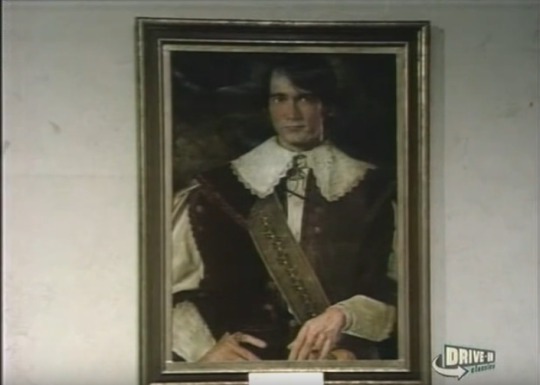

Jacques’ disappearing portrait from Strange Paradise Episode 12.
Also significantly, both The Case of Charles Dexter Ward and Strange Paradise give the evil ancestor’s portrait a prominent role in the plot. In both cases, this portrait hangs at the ancestor’s former residence and disappears either temporarily or permanently when he takes control of the man who resembles him. When Charles Dexter Ward is researching the history of Joseph Curwen, his sources lead him to an eighteenth-century townhouse at Orney Court in Ward’s hometown of Providence, Rhode Island, where Curwen settled after fleeing Salem, Massachusetts. He hires a restorator to restore the painting, has it moved to his study, and discovers some documents of Curwen’s hidden in the wall behind it. When he finally succeeds in resurrecting Curwen, the painting disintegrates into dust: an end which Curwen himself later meets. On Strange Paradise, Jacques’ oil painting sometimes disappears when he possesses Jean Paul, but the show is inconsistent about this cue from episode to episode.[3] In contrast to Curwen’s painting, Jacques’ portrait always returns after he leaves Jean Paul’s body and appears to be indestructible: when Jean Paul sets fire to Maljardin in Episode 65, the portrait survives and later re-appears in the attic at Jean Paul’s childhood home Desmond Hall in Episode 131.
In spite of these similarities, I should note that the method of resurrection differs from one work to the other. In Strange Paradise, Jacques achieves this by possessing Jean Paul: after Jean Paul frees him by removing the silver pin from the head of his effigy, Jacques’ spirit can enter and exit Jean Paul’s body at will. In The Case of Charles Dexter Ward, the title character literally resurrects Curwen, his great-great-great-grandfather, using his essential salts, after which Curwen murders him. Ward behaves as though Curwen has possessed him--he has the speech and manners of a man of the colonial period and knows extremely specific details about the history of Providence--but the pit above his right eye which Ward did not previously possess and the lack of the olive birthmark on Ward’s hip indicate a different body. When Jean Paul opens his casket in the pilot, he finds only the conjure doll and silver pin; the absence of Jacques’ body is never explained and could be for any number of reasons, which we shall not discuss here.
The Haunted Palace

A lobby card for The Haunted Palace asking the question, “What was the terrifying thing in the PIT that wanted women?” (Source)
In 1963, American International Pictures released The Haunted Palace, a loose adaptation of The Case of Charles Dexter Ward written by Charles Beaumont and directed by Roger Corman. Due to alleged executive meddling (a theme which should already be familiar to regular readers of this blog), the film was marketed as an adaptation of the Edgar Allan Poe poem of the same name, which Vincent Price quotes throughout the film. In the adaptation process, Beaumont made many changes to the source material, the most notable of which was the decision to have Curwen breed human women with the elder god Yog-Sothoth, as alluded to on the lobby card above.[4]
Though an entertaining and visually enthralling film, most of the changes made to The Haunted Palace weaken the plot. In my opinion, Beaumont added too many Hollywood horror conventions during the adaptation process, which did not always work effectively considering the unconventional source material, not to mention left many plot holes unfilled. The dated and sleazy sexual angle which he added to the film makes the cosmic horror of Yog-Sothoth less cosmic and more carnal; whether this makes him more or less frightening depends on one’s personal opinion, but I feel it contradicts his otherworldly characterization in Lovecraft’s works. For the most part, the talents of the director and the actors (especially Price, who is fabulous as always) make up for these problems, but I prefer--and highly recommend--the far more faithful radio drama adaptation by the H. P. Lovecraft Historical Society.
The most notable influence of The Haunted Palace on Strange Paradise comes from its characterizations of Charles Dexter Ward and Joseph Curwen. Despite many similarities with The Case of Charles Dexter Ward, the characterizations of both Jean Paul Desmond and Jacques Eloi des Mondes owe far more to the portrayals of the protagonist and villain in the The Haunted Palace than in its source material. In The Case of Charles Dexter Ward, neither Ward nor Curwen shows any romantic or sexual interest in women whatsoever. Lovecraft’s Ward only cares about antiquities, the local history of Providence, and the story of his ancestor; at twenty-six, he is unmarried and either asexual or simply too absorbed in his studies to pursue any romantic or sexual partner. The sexual orientation of Lovecraft’s Curwen is just as much of a mystery: although he took Eliza Tillinghast as a wife during his lifetime and their union produced a daughter, theirs was an arranged marriage for the sake of elevating Curwen’s social status within Providence society.
Both Price’s Ward and his Curwen, in contrast, show a marked interest in women. While their marriage is never outright stated to be a love match, Ward and his wife Ann (Debra Paget) appear to feel mutual love and devotion and have enough chemistry to imply a mutual sexual attraction. Like a dark mirror of Ward, Curwen shows a marked interest in the sexual and sexualized domination of women. In The Haunted Palace, the people of Arkham consider him a threat primarily because he lures local women to his palace to use in his rituals. While possessing Ward, Price’s Curwen rapes Ann--whom he later offers to Yog-Sothoth as well--and resurrects his former mistress, Hester Tillinghast (Cathie Merchant), who assists him in his sorcery in the film’s climax. If Lovecraft’s Curwen never did any similar actions, he does not mention them in his novella.
In Strange Paradise, romantic and sexual desire for women motivates both Jean Paul and Jacques. Jean Paul resurrects his ancestor neither out of an obsession with his history (as in The Case of Charles Dexter Ward) nor by accident (as in The Haunted Palace), but because Jacques’ spirit promises that, if the recently widowed Jean Paul frees him, he will restore life to his beloved wife Erica (Tudi Wiggins). Many episodes show Jean Paul mourning her death and narrating a tape-recorded journal to her, and he obsesses over protecting her cryogenically-preserved corpse from danger. Jacques romantically pursues several female characters over the course of the Maljardin arc--including Erica, her sister Dr. Alison Carr (Dawn Greenhalgh), and the wealthy widow Elizabeth Marshall (Paisley Maxwell) and her 20-year-old daughter Holly (Sylvia Feigel)--and makes many sexual innuendos about them. After resurrecting Erica, she obeys Jacques as though he were her husband and assists him by murdering most of the guests on Maljardin. This makes her character’s role comparable to that of Hester in The Haunted Palace.[5]
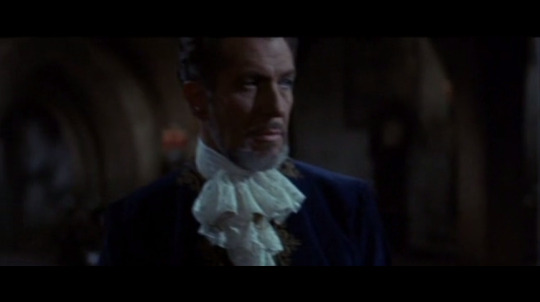
On a more superficial note, neither Jacques nor Curwen wears a costume appropriate to his era of origin. In his portrait and in flashbacks, Jacques wears a side-parted 1960s hairstyle and clothing, including a doublet and lace collar and cuffs, more appropriate for the 1630s than the late 17th century when he lived (1660-1689, according to the plaque beneath his portrait). Similarly out of place, Curwen has short hair and a beard and wears a historically inaccurate lace bib in his portrait and in the prologue at the beginning of the film. Unlike the others, this similarity is almost certainly coincidental.
An even greater similarity, however, can be found in the scene forty-five minutes into the film where Curwen speaks to Charles through his portrait.The scene occurs after the second instance of Curwen possessing him, during which he unearths Hester’s coffin and has his fellow warlocks Simon Orne (Lon Chaney, Jr.) and Jabez Hutchinson (Milton Parsons) deliver it to his cellar laboratory. Ann catches him down there and he sends her away, still possessed by Curwen. When Curwen leaves his body, they have this conversation:
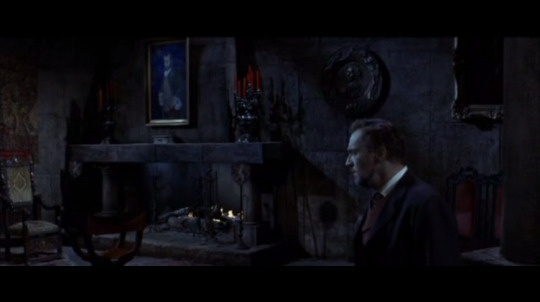
JC: (from painting) "Charles Dexter Ward…" CDW: "Leave me alone! LEAVE ME ALONE!" JC: "I will never leave you alone. Your blood is my blood, your mind is my mind, your body is my body. It will do you no good to resist me. Your efforts grow weaker every day." CDW: "No! NO!" JC: "You cannot keep me out, Ward. My will is too strong." (he possesses Ward again) "Too strong for you, Ward. Too strong for you."
Similarly, most episodes from the Maljardin arc of Strange Paradise feature at least one scene where Jean Paul communicates with Jacques’ disembodied spirit, represented by his portrait. In some scenes, they use a shot of the portrait hanging in the Great Hall; other times, they superimpose Jacques’ painted face over that of his identical descendant. One of the earliest examples of Jacques referring to them as one comes in Episode 5, when he taunts Jean Paul about his attraction to Alison. “She’s so delectable a woman. How could I--you--we--ever resist or let her go?” he says, snickering throughout. During another such conversation in Episode 27, Jacques refers to Jean Paul’s body as “our body” and commands him to rest because he is tired. In still another scene ten episodes later, he complains to Jean Paul that he is “waiting for the use of our body” as Jean Paul begs him not to “enter”; the dialogue in the scene has undertones suggestive of fantasy-metaphor rape, which Jacques’ sickeningly sweet tone of voice underscores. These are only a handful of examples of the recurring theme of Jacques viewing Jean Paul’s body as his own and seeking to dominate it completely.
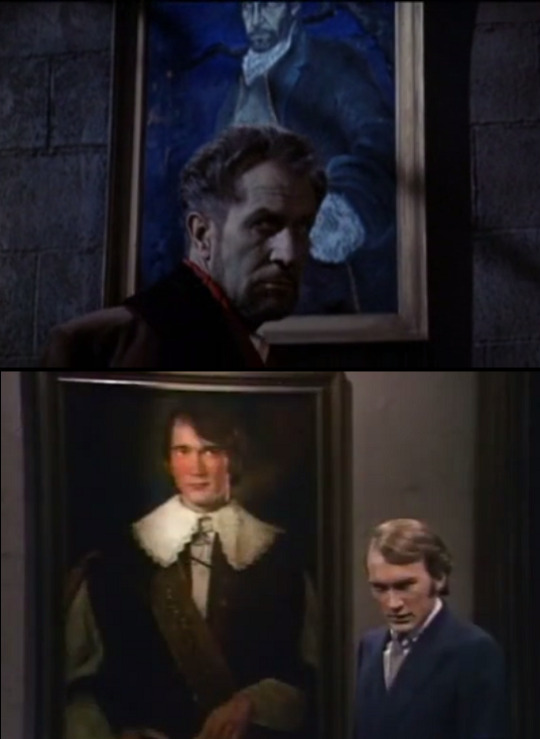
Comparison of a shot of Joseph Curwen glowering in front of his portrait with a similar one of Jean Paul glowering in front of the portrait of Jacques from Strange Paradise Episode 41.
Surprisingly, unlike in the novella, Curwen's portrait does not disintegrate when he possesses Ward. As Strange Paradise eventually started doing with Jacques’ portrait, Curwen’s portrait remains hanging until the end of the film, when it burns along with the rest of the palace (which begs the question of how it is even physically possible for stone to burn). Jacques’ portrait meets the same apparent end when Jean Paul sets fire to the château and flees Maljardin, but later returns to him at Desmond Hall, seemingly undamaged by the flames. It does not vanish for good until the final week of the show (Episodes 191-195), when a group of characters force him out of it by rubbing his brother’s ashes on his eyes and lips; this drives him out of the painting and into Jean Paul’s body, which he leaves at the end of the penultimate episode.[6]
Still another similarity comes from what is, in my opinion, Beaumont’s most ingenious change to the plot: the implication that all the human townspeople in 19th-century Arkham are reincarnations of identical people from the previous century, not just the necromancers. The same actors even portray their descendants: for example, Leo Gordon plays both Ezra and Edgar Weeden, and Frank Maxwell portrays both Dr. Marinus Willett and his ancestor Priam. Implied reincarnation figures heavily in the original outline for Strange Paradise, with Jean Paul, his sister-in-law Alison Carr, and the young heiress Holly Marshall all having dreams about previous lives on 17th-century Maljardin. Much like Jacques who possesses his descendant, Holly’s mother Elizabeth Marshall may have also been possessed by her previous incarnation, the native priestess Tarasca, under this outline, as foreshadowed in the clips in this video. The second Desmond Hall arc (Episodes 131-195), likewise, involves reincarnation from past ancestors (including the return of Jacques), but this final arc otherwise shares little in common with either The Case of Charles Dexter Ward or its adaptation.
Conclusion
There is strong evidence that Strange Paradise drew inspiration from both The Case of Charles Dexter Ward and The Haunted Palace for the story about Jean Paul Desmond’s possession by Jacques Eloi des Mondes. We see elements from both the book and its first film adaptation in the serial: Ian Martin’s characterization of Jacques, the possession, and the talking portrait owe more to the film, while the disappearing portrait and certain elements of Jacques’ backstory are more reminiscent of Lovecraft’s original novella. Despite this inspiration, Ian Martin added many other elements to the story of Maljardin that were not present in either work, including the conjure doll and silver pin, the strange circumstances surrounding Erica’s death, and secondary protagonist Holly’s pursuit by several male characters and victimization by a mysterious spirit. The result is a serial combining the plots of The Case of Charles Dexter Ward and its adaptation with original ideas to create a unique and--yes--strange new story.
Notes
[1] For more information on the aborted Tarasca storyline, see “The Secret of Tarasca“ and the section of my review of Episode 40 titled “The Lost Episode 40.”
[2] Dorothy Daniels, Island of Evil (New York: Paperback Library, 1970), p. 45.
[3] The Paperback Library novels do not just portray this consistently, but portray the other characters as seeing an empty frame while Jacques is controlling Jean Paul’s body. See also my review of Episode 15.
[4] For an in-depth plot comparison, see the blog post “The Films of Charles Dexter Ward” by Fake Geek Boy.
[5] According to an early newspaper summary for Episode 35, Tarasca would have endangered the life of Jean Paul’s love interest Alison, also shows some signs of possible influence by this subplot. See also this video.
[6] Many of the events of the final month of Strange Paradise are unclear and/or unexplained, so this interpretation should be taken with a grain of salt.
#strange paradise#the case of charles dexter ward#h. p. lovecraft#the haunted palace#charles beaumont#essay#sp influences#maljardin arc#desmond hall arc ii#aka#the great desmond hall mind screw#related media#analysis#dorothy daniels#fantasy metaphor murder#fantasy metaphor rape#ian martin#paperback library#tarasca#vincent price
3 notes
·
View notes
Text
Josephine Baker
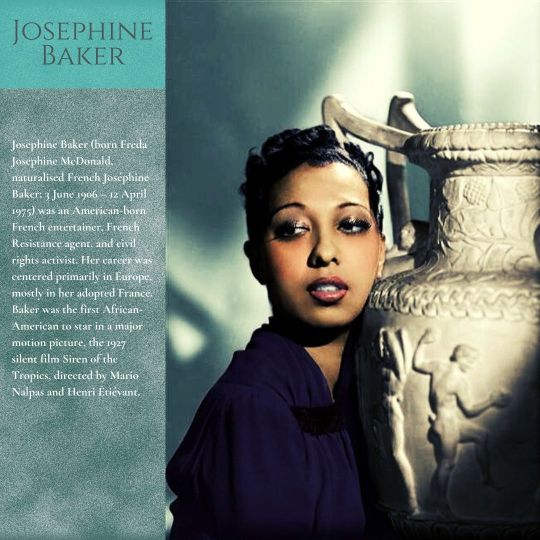
Josephine Baker (born Freda Josephine McDonald, naturalised French Joséphine Baker; 3 June 1906 – 12 April 1975) was an American-born French entertainer, French Resistance agent, and civil rights activist. Her career was centered primarily in Europe, mostly in her adopted France. Baker was the first African-American to star in a major motion picture, the 1927 silent film Siren of the Tropics, directed by Mario Nalpas and Henri Étiévant.
During her early career Baker was renowned as a dancer, and was among the most celebrated performers to headline the revues of the Folies Bergère in Paris. Her performance in the revue Un vent de folie in 1927 caused a sensation in Paris. Her costume, consisting of only a short skirt of artificial bananas and a beaded necklace, became an iconic image and a symbol of the Jazz Age and the 1920s.
Baker was celebrated by artists and intellectuals of the era, who variously dubbed her the “Black Venus”, the "Black Pearl", the "Bronze Venus", and the "Creole Goddess". Born in St. Louis, Missouri, she renounced her U.S. citizenship and became a French national after her marriage to French industrialist Jean Lion in 1937. She raised her children in France. "I have two loves, my country and Paris", Baker once said, and she sang: « J'ai deux amours, mon pays et Paris ».
She was known for aiding the French Resistance during World War II. After the war, she was awarded the Croix de guerre by the French military, and was named a Chevalier of the Légion d'honneur by General Charles de Gaulle.
Baker refused to perform for segregated audiences in the United States and is noted for her contributions to the Civil Rights Movement. In 1968, she was offered unofficial leadership in the movement in the United States by Coretta Scott King, following Martin Luther King Jr.'s assassination. After thinking it over, Baker declined the offer out of concern for the welfare of her children.
Early life
Freda Josephine McDonald was born in St. Louis, Missouri. Her mother, Carrie, was adopted in Little Rock, Arkansas in 1886 by Richard and Elvira McDonald, both of whom were former slaves of African and Native American descent. Josephine Baker's estate identifies vaudeville drummer Eddie Carson as her natural father despite evidence to the contrary. Baker's foster son Jean-Claude Baker wrote a biography, published in 1993, titled Josephine: The Hungry Heart. Jean-Claude Baker did an exhaustive amount of research into the life of Josephine Baker, including the identity of her biological father. In the book, he discusses at length the circumstances surrounding Josephine Baker's birth:
The records of the city of St. Louis tell an almost unbelievable story. They show that (Josephine Baker's mother) Carrie McDonald ... was admitted to the (exclusively white) Female Hospital on May 3, 1906, diagnosed as pregnant. She was discharged on June 17, her baby, Freda J. McDonald having been born two weeks earlier. Why six weeks in the hospital? Especially for a black woman (of that time) who would customarily have had her baby at home with the help of a midwife? Obviously, there had been complications with the pregnancy, but Carrie's chart reveals no details. The father was identified (on the birth certificate) simply as "Edw"... I think Josephine's father was white – so did Josephine, so did her family ... people in St. Louis say that (Baker's mother) had worked for a German family (around the time she became pregnant). He's the one who must have got her into that hospital and paid to keep her there all those weeks. Also, her baby's birth was registered by the head of the hospital at a time when most black births were not. I have unraveled many mysteries associated with Josephine Baker, but the most painful mystery of her life, the mystery of her father's identity, I could not solve. The secret died with Carrie, who refused to the end to talk about it. She let people think Eddie Carson was the father, and Carson played along, (but) Josephine knew better.
Josephine spent her early life at 212 Targee Street (known by some St. Louis residents as Johnson Street) in the Mill Creek Valley neighborhood of St. Louis, a racially mixed low-income neighborhood near Union Station, consisting mainly of rooming houses, brothels, and apartments without indoor plumbing. Josephine was always poorly dressed and hungry as a child, and developed street smarts playing in the railroad yards of Union Station.
Josephine's mother married a kind but perpetually unemployed man, Arthur Martin, with whom she had son Arthur and two more daughters, Marguerite and Willie. She took in laundry to wash to make ends meet, and at eight years old, Josephine began working as a live-in domestic for white families in St. Louis. One woman abused her, burning Josephine's hands when the young girl put too much soap in the laundry. By age 12, she had dropped out of school.
At 13 she worked as a waitress at the Old Chauffeur's Club at 3133 Pine Street. She also lived as a street child in the slums of St. Louis, sleeping in cardboard shelters, scavenging for food in garbage cans, making a living with street-corner dancing. It was at the Old Chauffeur's Club where Josephine met Willie Wells and married him the same year. However, the marriage lasted less than a year. Following her divorce from Wells, she found work with a street performance group called the Jones Family Band.
In Baker's teen years she struggled to have a healthy relationship with her mother, Carrie McDonald, who did not want Josephine to become an entertainer, and scolded her for not tending to her second husband Willie Baker, whom she had married in 1921 at 15. Although she left Willie Baker when her vaudeville troupe was booked into a New York City venue and divorced him in 1925, it was during this time she began to see significant career success, and she continued to use his last name professionally for the rest of her life.
Though Baker traveled, then returned with gifts and money for her mother and younger half-sister, the turmoil with her mother pushed her to make a trip to France.
Career
Early years
Baker's consistent badgering of a show manager in her hometown led to her being recruited for the St. Louis Chorus vaudeville show. At the age of 15, she headed to New York City during the Harlem Renaissance, performing at the Plantation Club, Florence Mills’ old stomping ground, and in the chorus lines of the groundbreaking and hugely successful Broadway revues Shuffle Along (1921) with Adelaide Hall and The Chocolate Dandies (1924).
Baker performed as the last dancer on the end of the chorus line, where her act was to perform in a comic manner, as if she were unable to remember the dance, until the encore, at which point she would perform it not only correctly but with additional complexity. A term of the time describes this part of the cast as "The Pony". Baker was billed at the time as "the highest-paid chorus girl in vaudeville".
Her career began with blackface comedy at local clubs; this was the "entertainment" of which her mother had disapproved; however, these performances landed Baker an opportunity to tour in Paris, which would become the place she called home until her final days.
Paris and rise to fame
Baker sailed to Paris for a new venture, and opened in La Revue Nègre on 2 October 1925, aged 19, at the Théâtre des Champs-Élysées.
In a 1974 interview with The Guardian, Baker explained that she obtained her first big break in the bustling city. "No, I didn't get my first break on Broadway. I was only in the chorus in 'Shuffle Along' and 'Chocolate Dandies'. I became famous first in France in the twenties. I just couldn't stand America and I was one of the first coloured Americans to move to Paris. Oh yes, Bricktop was there as well. Me and her were the only two, and we had a marvellous time. Of course, everyone who was anyone knew Bricky. And they got to know Miss Baker as well."
In Paris, she became an instant success for her erotic dancing, and for appearing practically nude onstage. After a successful tour of Europe, she broke her contract and returned to France to star at the Folies Bergère, setting the standard for her future acts.
Baker performed the "Danse Sauvage" wearing a costume consisting of a skirt made of a string of artificial bananas. Her success coincided (1925) with the Exposition des Arts Décoratifs, which gave birth to the term "Art Deco", and also with a renewal of interest in non-Western forms of art, including African. Baker represented one aspect of this fashion. In later shows in Paris, she was often accompanied on stage by her pet cheetah, "Chiquita", who was adorned with a diamond collar. The cheetah frequently escaped into the orchestra pit, where it terrorized the musicians, adding another element of excitement to the show.
After a while, Baker was the most successful American entertainer working in France. Ernest Hemingway called her "the most sensational woman anyone ever saw." The author spent hours talking with her in Paris bars. Picasso drew paintings depicting her alluring beauty. Jean Cocteau became friendly with her and helped vault her to international stardom.
Baker starred in three films which found success only in Europe: the silent film Siren of the Tropics (1927), Zouzou (1934) and Princesse Tam Tam (1935). She starred in Fausse Alerte in 1940.
At this time she scored her most successful song, "J'ai deux amours" (1931). At the start of her career in France, Baker met a Sicilian former stonemason who passed himself off as a count, who persuaded her to let him manage her. Giuseppe Pepito Abatino was not only Baker's management, but her lover as well. The two could not marry because Baker was still married to her second husband, Willie Baker.
Under the management of Abatino, Baker's stage and public persona, as well as her singing voice, were transformed. In 1934, she took the lead in a revival of Jacques Offenbach's opera La créole, which premiered in December of that year for a six-month run at the Théâtre Marigny on the Champs-Élysées of Paris. In preparation for her performances, she went through months of training with a vocal coach. In the words of Shirley Bassey, who has cited Baker as her primary influence, "... she went from a 'petite danseuse sauvage' with a decent voice to 'la grande diva magnifique' ... I swear in all my life I have never seen, and probably never shall see again, such a spectacular singer and performer."Despite her popularity in France, Baker never attained the equivalent reputation in America. Her star turn in a 1936 revival of Ziegfeld Follies on Broadway generated less than impressive box office numbers, and later in the run, she was replaced by Gypsy Rose Lee. Time magazine referred to her as a "Negro wench ... whose dancing and singing might be topped anywhere outside of Paris", while other critics said her voice was "too thin" and "dwarf-like" to fill the Winter Garden Theatre. She returned to Europe heartbroken. This contributed to Baker's becoming a legal citizen of France and giving up her American citizenship.
Baker returned to Paris in 1937, married the French industrialist Jean Lion, and became a French citizen. They were married in the French town of Crèvecœur-le-Grand, in a wedding presided over by the mayor, Jammy Schmidt.
Work during World War II
In September 1939, when France declared war on Germany in response to the invasion of Poland, Baker was recruited by the Deuxième Bureau, French military intelligence, as an "honorable correspondent". Baker collected what information she could about German troop locations from officials she met at parties. She specialized in gatherings at embassies and ministries, charming people as she had always done, while gathering information. Her café-society fame enabled her to rub shoulders with those in the know, from high-ranking Japanese officials to Italian bureaucrats, and to report back what she heard. She attended parties and gathered information at the Italian embassy without raising suspicion.
When the Germans invaded France, Baker left Paris and went to the Château des Milandes, her home in the Dordogne département in the south of France. She housed people who were eager to help the Free French effort led by Charles de Gaulle and supplied them with visas. As an entertainer, Baker had an excuse for moving around Europe, visiting neutral nations such as Portugal, as well as some in South America. She carried information for transmission to England, about airfields, harbors, and German troop concentrations in the West of France. Notes were written in invisible ink on Baker's sheet music.
Later in 1941, she and her entourage went to the French colonies in North Africa. The stated reason was Baker's health (since she was recovering from another case of pneumonia) but the real reason was to continue helping the Resistance. From a base in Morocco, she made tours of Spain. She pinned notes with the information she gathered inside her underwear (counting on her celebrity to avoid a strip search). She met the Pasha of Marrakech, whose support helped her through a miscarriage (the last of several). After the miscarriage, she developed an infection so severe it required a hysterectomy. The infection spread and she developed peritonitis and then sepsis. After her recovery (which she continued to fall in and out of), she started touring to entertain British, French, and American soldiers in North Africa. The Free French had no organized entertainment network for their troops, so Baker and her entourage managed for the most part on their own. They allowed no civilians and charged no admission.
After the war, Baker received the Croix de guerre and the Rosette de la Résistance. She was made a Chevalier of the Légion d'honneur by General Charles de Gaulle.
Baker's last marriage, to French composer and conductor Jo Bouillon, ended around the time Baker opted to adopt her 11th child.
Later career
In 1949, a reinvented Baker returned in triumph to the Folies Bergere. Bolstered by recognition of her wartime heroics, Baker the performer assumed a new gravitas, unafraid to take on serious music or subject matter. The engagement was a rousing success and reestablished Baker as one of Paris' preeminent entertainers. In 1951 Baker was invited back to the United States for a nightclub engagement in Miami. After winning a public battle over desegregating the club's audience, Baker followed up her sold-out run at the club with a national tour. Rave reviews and enthusiastic audiences accompanied her everywhere, climaxed by a parade in front of 100,000 people in Harlem in honor of her new title: NAACP's "Woman of the Year". Her future looked bright, with six months of bookings and promises of many more to come.
In 1952 Baker was hired to crown the Queen of the Cavalcade of Jazz for the famed eighth Cavalcade of Jazz concert held at Wrigley Field in Los Angeles which was produced by Leon Hefflin, Sr. on June 1. Also featured to perform that day were Roy Brown and His Mighty Men, Anna Mae Winburn and Her Sweethearts, Toni Harper, Louis Jordan, Jimmy Witherspoon and Jerry Wallace.
An incident at the Stork Club interrupted and overturned her plans. Baker criticized the club's unwritten policy of discouraging black patrons, then scolded columnist Walter Winchell, an old ally, for not rising to her defense. Winchell responded swiftly with a series of harsh public rebukes, including accusations of Communist sympathies (a serious charge at the time). The ensuing publicity resulted in the termination of Baker's work visa, forcing her to cancel all her engagements and return to France. It was almost a decade before U.S. officials allowed her back into the country.
In January 1966, Fidel Castro invited Baker to perform at the Teatro Musical de La Habana in Havana, Cuba, at the 7th-anniversary celebrations of his revolution. Her spectacular show in April broke attendance records. In 1968, Baker visited Yugoslavia and made appearances in Belgrade and in Skopje. In her later career, Baker faced financial troubles. She commented, "Nobody wants me, they've forgotten me"; but family members encouraged her to continue performing. In 1973 she performed at Carnegie Hall to a standing ovation.
The following year, she appeared in a Royal Variety Performance at the London Palladium, and then at the Monacan Red Cross Gala, celebrating her 50 years in French show business. Advancing years and exhaustion began to take their toll; she sometimes had trouble remembering lyrics, and her speeches between songs tended to ramble. She still continued to captivate audiences of all ages.
Civil rights activism
Although based in France, Baker supported the Civil Rights Movement during the 1950s. When she arrived in New York with her husband Jo, they were refused reservations at 36 hotels because of racial discrimination. She was so upset by this treatment that she wrote articles about the segregation in the United States. She also began traveling into the South. She gave a talk at Fisk University, a historically black college in Nashville, Tennessee, on "France, North Africa And The Equality Of The Races In France".
She refused to perform for segregated audiences in the United States, although she was offered $10,000 by a Miami club. (The club eventually met her demands). Her insistence on mixed audiences helped to integrate live entertainment shows in Las Vegas, Nevada. After this incident, she began receiving threatening phone calls from people claiming to be from the Ku Klux Klan but said publicly that she was not afraid of them.
In 1951, Baker made charges of racism against Sherman Billingsley's Stork Club in Manhattan, where she had been refused service.Actress Grace Kelly, who was at the club at the time, rushed over to Baker, took her by the arm and stormed out with her entire party, vowing never to return (although she returned on 3 January 1956 with Prince Rainier of Monaco). The two women became close friends after the incident.
When Baker was near bankruptcy, Kelly offered her a villa and financial assistance (Kelly by then was princess consort of Rainier III of Monaco). (However, during his work on the Stork Club book, author and New York Times reporter Ralph Blumenthal was contacted by Jean-Claude Baker, one of Baker's sons. Having read a Blumenthal-written story about Leonard Bernstein's FBI file, he indicated that he had read his mother's FBI file and, using comparison of the file to the tapes, said he thought the Stork Club incident was overblown.))
Baker worked with the NAACP. Her reputation as a crusader grew to such an extent that the NAACP had Sunday, 20 May 1951 declared "Josephine Baker Day". She was presented with life membership with the NAACP by Nobel Peace Prize winner Dr. Ralph Bunche. The honor she was paid spurred her to further her crusading efforts with the "Save Willie McGee" rally after he was convicted of the 1948 beating death of a furniture shop owner in Trenton, New Jersey. As the decorated war hero who was bolstered by the racial equality she experienced in Europe, Baker became increasingly regarded as controversial; some black people even began to shun her, fearing that her outspokenness and racy reputation from her earlier years would hurt the cause.
In 1963, she spoke at the March on Washington at the side of Rev. Martin Luther King Jr.
Baker was the only official female speaker. While wearing her Free French uniform emblazoned with her medal of the Légion d'honneur, she introduced the "Negro Women for Civil Rights." Rosa Parks and Daisy Bates were among those she acknowledged, and both gave brief speeches. Not everyone involved wanted Baker present at the March; some thought her time overseas had made her a woman of France, one who was disconnected from the Civil Rights issues going on in America. In her powerful speech, one of the things Baker notably said was:
I have walked into the palaces of kings and queens and into the houses of presidents. And much more. But I could not walk into a hotel in America and get a cup of coffee, and that made me mad. And when I get mad, you know that I open my big mouth. And then look out, 'cause when Josephine opens her mouth, they hear it all over the world ...
After King's assassination, his widow Coretta Scott King approached Baker in the Netherlands to ask if she would take her husband's place as leader of the Civil Rights Movement. After many days of thinking it over, Baker declined, saying her children were "too young to lose their mother".
Personal life
Relationships
Josephine Baker was bisexual. Her first marriage was to American Pullman porter Willie Wells when she was only 13 years old. The marriage was reportedly very unhappy and the couple divorced a short time later. Another short-lived marriage followed to Willie Baker in 1921; she retained Baker's last name because her career began taking off during that time, and it was the name by which she became best known. While she had four marriages to men, Jean-Claude Baker writes that Josephine also had several relationships with women.
During her time in the Harlem Renaissance arts community, one of her relationships was with Blues singer Clara Smith. In 1925, she began an extramarital relationship with the Belgian novelist Georges Simenon. In 1937, Baker married Frenchman Jean Lion. She and Lion separated in 1940. She married French composer and conductor Jo Bouillon in 1947, and their union also ended in divorce but lasted 14 years. She was later involved for a time with the artist Robert Brady, but they never married.
Children
During Baker's work with the Civil Rights Movement, she began adopting children, forming a family she often referred to as "The Rainbow Tribe". Baker wanted to prove that "children of different ethnicities and religions could still be brothers." She often took the children with her cross-country, and when they were at Château des Milandes, she arranged tours so visitors could walk the grounds and see how natural and happy the children in "The Rainbow Tribe" were. Her estate featured hotels, a farm, rides, and the children singing and dancing for the audience. She'd charge admission for visitors to enter and partake in the activities, which included watching the children play. Baker used her children as metaphors: living examples of what humanity should look like, and her diverse children were used in a sort of attack against racism. She created dramatic backstories for them, picking with clear intent in mind: at one point she wanted and planned to get a Jewish baby, but settled for a French one instead. She also raised them as different religions to further her model for the world, taking two children from Algeria and raising one Muslim and the other Catholic. One member of the Tribe, Jean-Claude Baker, said:
She wanted a doll.
Another, Akio who was adopted from Japan, said
She was a great artist, and she was our mother. Mothers make mistakes. Nobody's perfect.
Baker raised two daughters, French-born Marianne and Moroccan-born Stellina, and 10 sons, Korean-born Jeannot (or Janot), Japanese-born Akio, Colombian-born Luis, Finnish-born Jari (now Jarry), French-born Jean-Claude and Noël, Israeli-born Moïse, Algerian-born Brahim, Ivorian-born Koffi, and Venezuelan-born Mara. For some time, Baker lived with her children and an enormous staff in the château in Dordogne, France, with her fourth husband, Jo Bouillon.
Later years and death
In her later years, Baker converted to Roman Catholicism. In 1968, Baker lost her castle owing to unpaid debts; afterwards Princess Grace offered her an apartment in Roquebrune, near Monaco.
Baker was back on stage at the Olympia in Paris in 1968, in Belgrade and at Carnegie Hall in 1973, and at the Royal Variety Performance at the London Palladium and at the Gala du Cirque in Paris in 1974. On 8 April 1975, Baker starred in a retrospective revue at the Bobino in Paris, Joséphine à Bobino 1975, celebrating her 50 years in show business. The revue, financed notably by Prince Rainier, Princess Grace, and Jacqueline Kennedy Onassis, opened to rave reviews. Demand for seating was such that fold-out chairs had to be added to accommodate spectators. The opening night audience included Sophia Loren, Mick Jagger, Shirley Bassey, Diana Ross, and Liza Minnelli.
Four days later, Baker was found lying peacefully in her bed surrounded by newspapers with glowing reviews of her performance. She was in a coma after suffering a cerebral hemorrhage. She was taken to Pitié-Salpêtrière Hospital, where she died, aged 68, on 12 April 1975.
She received a full Roman Catholic funeral that was held at L'Église de la Madeleine. The only American-born woman to receive full French military honors at her funeral, Baker's funeral was the occasion of a huge procession. After a family service at Saint-Charles Church in Monte Carlo, Baker was interred at Monaco's Cimetière de Monaco.
Legacy
Place Joséphine Baker (48°50′29″N 2°19′26″E) in the Montparnasse Quarter of Paris was named in her honor. She has also been inducted into the St. Louis Walk of Fame, and on 29 March 1995, into the Hall of Famous Missourians. St. Louis's Channing Avenue was renamed Josephine Baker Boulevard and a wax sculpture of Baker is on permanent display at The Griot Museum of Black History.
In 2015 she was inducted into the Legacy Walk in Chicago, Illinois, USA. The Piscine Joséphine Baker is a swimming pool along the banks of the Seine in Paris named after her.
Writing in the on-line BBC magazine in late 2014, Darren Royston, historical dance teacher at RADA credited Baker with being the Beyoncé of her day, and bringing the Charleston to Britain. Two of Baker's sons, Jean-Claude and Jarry (Jari), grew up to go into business together, running the restaurant Chez Josephine on Theatre Row, 42nd Street, New York City. It celebrates Baker's life and works.
Château des Milandes, a castle near Sarlat in the Dordogne, was Baker's home where she raised her twelve children. It is open to the public and displays her stage outfits including her banana skirt (of which there are apparently several). It also displays many family photographs and documents as well as her Legion of Honour medal. Most rooms are open for the public to walk through including bedrooms with the cots where her children slept, a huge kitchen, and a dining room where she often entertained large groups. The bathrooms were designed in art deco style but most rooms retained the French chateau style.
Baker continued to influence celebrities more than a century after her birth. In a 2003 interview with USA Today, Angelina Jolie cited Baker as "a model for the multiracial, multinational family she was beginning to create through adoption". Beyoncé performed Baker's banana dance at the Fashion Rocks concert at Radio City Music Hall in September 2006.
Writing on the 110th anniversary of her birth, Vogue described how her 1926 "danse sauvage" in her famous banana skirt "brilliantly manipulated the white male imagination" and "radically redefined notions of race and gender through style and performance in a way that continues to echo throughout fashion and music today, from Prada to Beyoncé."
On 3 June 2017, the 111th anniversary of her birth, Google released an animated Google Doodle, which consists of a slideshow chronicling her life and achievements.
On Thursday 22 November 2018, a documentary titled Josephine Baker: The Story of an Awakening, directed by Ilana Navaro, premiered at the Beirut Art Film Festival. It contains rarely seen archival footage, including some never before discovered, with music and narration.
In August 2019, Baker was one of the honorees inducted in the Rainbow Honor Walk, a walk of fame in San Francisco's Castro neighborhood noting LGBTQ people who have "made significant contributions in their fields."
Portrayals
Baker appears in her role as a member of the French Resistance in Johannes Mario Simmel's 1960 novel, Es muss nicht immer Kaviar sein (C'est pas toujours du caviar).
A character loosely based on Baker is featured in an episode of Hogan's Heroes titled "Is General Hammerschlag Burning?", which originally aired on 18 November 1967. The character Kumasa (played by Barbara McNair) is a chanteuse based in Paris. She later reveals herself to be Carol Dukes, a high-school classmate of Sergeant James Kinchloe (Ivan Dixon), on whom she had a secret crush.
The Italian-Belgian francophone singer composer Salvatore Adamo pays tribute to Baker with the song "Noël Sur Les Milandes" (album Petit Bonheur – EMI 1970).
Diana Ross portrayed Baker in both her Tony Award-winning Broadway and television show An Evening with Diana Ross. When the show was made into an NBC television special entitled The Big Event: An Evening with Diana Ross, Ross again portrayed Baker.
A German submariner mimics Baker's Danse banane in the 1981 film Das Boot.
In 1986, Helen Gelzer portrayed Baker on the London stage for a limited run in the musical Josephine – "a musical version of the life and times of Josephine Baker" with book, lyrics and music by Michael Wild. The show was produced by Baker's longtime friend Jack Hocket in conjunction with Premier Box-Office, and the musical director was Paul Maguire. Gelzer also recorded a studio cast album titled Josephine.
British singer-songwriter, Al Stewart wrote song about Josephine Baker. It appears in album "Last days of the century" from 1988.
In 1991, Baker's life story, The Josephine Baker Story, was broadcast on HBO. Lynn Whitfield portrayed Baker, and won an Emmy Award for Outstanding Lead Actress in a Miniseries or a Special – becoming the first Black actress to win the award in this category.
Artist Hassan Musa depicted Baker in a 1994 series of paintings called Who needs Bananas?
In the 1997 animated musical film Anastasia, Baker appears with her cheetah during the musical number "Paris Holds the Key (to Your Heart)".
In 2002, played by Karine Plantadit in Frida.
A character based on Baker (topless, wearing the famous "banana skirt") appears in the opening sequence of the 2003 animated film The Triplets of Belleville (Les Triplettes de Belleville).
The 2004 erotic novel Scandalous by British author Angela Campion uses Baker as its heroine and is inspired by Baker's sexual exploits and later adventures in the French Resistance. In the novel, Baker, working with a fictional black Canadian lover named Drummer Thompson, foils a plot by French fascists in 1936 Paris.
Her influence upon and assistance with the careers of husband and wife dancers Carmen De Lavallade and Geoffrey Holder are discussed and illustrated in rare footage in the 2005 Linda Atkinson/Nick Doob documentary, Carmen and Geoffrey.
Beyoncé has portrayed Baker on various occasions. During the 2006 Fashion Rocks show, Knowles performed "Dejá Vu" in a revised version of the Danse banane costume. In Knowles's video for "Naughty Girl", she is seen dancing in a huge champagne glass à la Baker. In I Am ... Yours: An Intimate Performance at Wynn Las Vegas, Beyonce lists Baker as an influence of a section of her live show.
In 2006, Jérôme Savary produced a musical, A La Recherche de Josephine – New Orleans for Ever (Looking for Josephine), starring Nicolle Rochelle. The story revolved around the history of jazz and Baker's career.
In 2010, Keri Hilson portrayed Baker in her single "Pretty Girl Rock".
In 2011, Sonia Rolland portrayed Baker in the film Midnight in Paris.
Baker was heavily featured in the 2012 book Josephine's Incredible Shoe & The Blackpearls by Peggi Eve Anderson-Randolph.
In July 2012, Cheryl Howard opened in The Sensational Josephine Baker, written and performed by Howard and directed by Ian Streicher at the Beckett Theatre of Theatre Row on 42nd Street in New York City, just a few doors away from Chez Josephine.
In July 2013, Cush Jumbo's debut play Josephine and I premiered at the Bush Theatre, London. It was re-produced in New York City at The Public Theater's Joe's Pub from 27 February to 5 April 2015.
In June 2016, Josephine, a burlesque cabaret dream play starring Tymisha Harris as Josephine Baker premiered at the 2016 San Diego Fringe Festival. The show has since played across North America and had a limited off-Broadway run in January–February 2018 at SoHo Playhouse in New York City.
In February 2017, Tiffany Daniels portrayed Baker in the Timeless television episode "The Lost Generation".
In late February 2017, a new play about Baker's later years, The Last Night of Josephine Baker by playwright Vincent Victoria, opened in Houston, Texas, starring Erica Young.
Baker appears as a recruitable secret agent with French citizenship in the 2020 DLC La Resistance for the WWII grand strategy game Hearts of Iron IV.
Film credits
Siren of the Tropics (1927)
The Woman from the Folies Bergères (1927) short subject
Zouzou (1934)
Princesse Tam Tam (1935)
Fausse alerte (The French Way) (1945)
Moulin Rouge (1941)
An jedem Finger zehn (1954)
Carosello del varietà (1955)
9 notes
·
View notes
Text
Precisely The Way To Put Develop Cannabis Withdrawal
There is also another foods wanting to learn provide the right levels of Omega 3's. Tofu, a soy protein is this food. Eggs that are enriched with Omega 3 are also beneficial plus they are eaten identical to regular offspring. Other foods that provide Omega 3 fatty acids include navy beans, walnuts, and peanuts.

Growing really weed back links a great idea, around the often has tragic backlashes. If a cancer patient can be delivered to jail for growing marijuana, don't you believe you can too? Cops agencies around the globe have developed methods for tracking home growers, pinpointing increased electricity use, using infrared cameras mounted on helicopters to find unusual hot-spots in random houses, and following leads from backstabbing neighbors. Besides all of that, the cultivation of the Cannabis plant is a greuling and delicate art form, which probably have neither the time or startup money important to carry out properly. Protein powder is constituted of four basic sources like whey from milk, eggs, soy and rice. Enhancing your be along with combination of other solution. They are processed into powdered form and could be consumed by mixing it with water, milk, juice or soup. Whey protein is absorbed by human body very efficiently so the the most used just one particular. Soy protein contains essential amino fatty acids. Egg white protein is a dairy free protein. Hemp seeds contain Life Vibes CBD Oil Benefits and highly digestible protein. Milk protein contains amino acids that assistance recovery. Don't result in the mistake of thinking you may products to dry skin tone up. You reason because sebaceous glands are working overtime you'll need this. In an attempt to cure your zits. Forget the recommended 8 glasses a big day. That's not a bad start but let's double it. Anyone vegetable-soup would like to get lean? Then drink at any rate a gallon of water a day. While dieting for competition, bodybuilders will drink up to 2 gallons of water per session. Why do you think that is regarded as? Another pure natural soap good for everything kinds of facial and scalp troubles. African black soap, not the fake black soap sold in the states and someplace else. But 100% pure black soap originated Ghana and made from plantain skins, not banana skins, and palm kernel oil, cocoa pod, coconut oil, and natural sodium. They'll also ask you' number of detailed questions from the insurance coverage application. It's very important you simply be totally transparent within your agent. Remember, he or she has your interest in desire. Do not withhold information from each of them. It's not unheard of for clients to omit an important detail, in order to then their very own application rejected by the insurer. Be candid of your agent allowing them to Cannabis Study help a person to get the best options effortlessly your individual situation. Anne Frank is famous for Life Vibes CBD Reviews Vibes CBD Review her diary n which she wrote down her experiences during World War II. She wrote it in a canal house on the Prinsengracht where she and her family were avoiding the Nazi's. You pay out a homage by visiting her hiding closet. It's a very popular destination for tourist so come early to avoid long ques.
1 note
·
View note
Text
Harnessing the potent benefits of natural ingredients sourced from the heart of Africa, this soap is a symphony of nourishing goodness. Rich in shea butter, cocoa pods, palm kernel oil, and plantain skins, our formula is designed to cleanse, moisturize, and rejuvenate your skin. To know more details kindly visit our official website https://gentleoasis.com/products/authentic-african-black-soap

0 notes